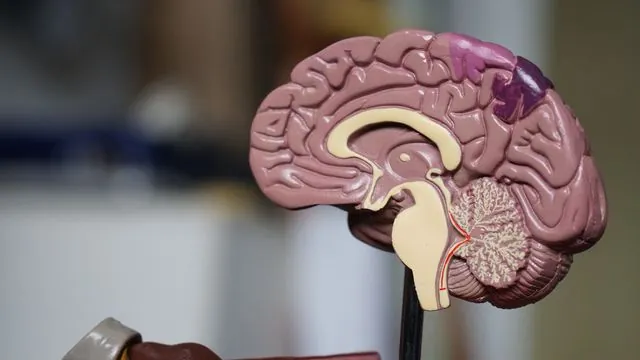
Groundbreaking Discovery: New Cell Clusters in the Human Amygdala Could Revolutionize Anxiety Treatment!
2024-10-31
Author: Sarah
Groundbreaking Discovery: New Cell Clusters in the Human Amygdala Could Revolutionize Anxiety Treatment!
In a major advance for psychiatric medicine, researchers at the University of California, Davis have unveiled new clusters of cells in the human amygdala—an area of the brain intricately linked to emotional responses, particularly fear and anxiety. The findings, published on October 30 in the prestigious American Journal of Psychiatry, hold the potential to pave the way for more precise treatments targeting anxiety disorders that afflict millions worldwide.
According to Drew Fox, an associate professor in UC Davis's Department of Psychology and the senior author of the study, "The amygdala is central to emotion processing in the brain and has a significant role in conditions like fear and anxiety." While variations in the amygdala's size and structure have long been scrutinized, the results suggest that these factors may not reliably predict emotional disturbances.
A New Perspective on Amygdala Cell Types
Prior studies with rodent models indicated that different subregions of the amygdala comprise various cell types, each playing distinct roles, sometimes even acting in opposition. Addressing the complications of identifying these cell types in humans, the UC Davis team, led by graduate student Shawn Kamboj, set out to explore the cellular composition of the amygdala in both human subjects and non-human primates.
Employing advanced single-cell RNA sequencing technology, the researchers analyzed brain samples, isolating individual cells to determine which genes were actively expressed. This approach allows for clustering cells based on their gene activity, offering insights into the origin and role of each type.
"We can cluster cells based on their gene expression, identify cell types, and explore their developmental origins," Fox stated, optimistic about the implications for psychiatric research and treatment.
Insights into Anxiety Disorders
A significant revelation from the study involves the identification of a specific group of cells marked by the gene FOXP2, which are located at the edges of the amygdala known as intercalated cells. Notably, prior research in rodents suggests that these intercalated cells function as "gatekeepers," regulating emotional signals entering or leaving the amygdala. Such insights create an exhilarating prospect for targeting these cells in developing future treatments.
Moreover, the researchers noted important similarities and differences between the cell types in human and non-human primate amygdalae. Understanding these distinctions is pivotal for translating animal research to human applications related to anxiety, autism, and other disorders.
Towards Targeted Treatment Strategies
A promising discovery is that cells expressing FOXP2 also produce Neuropeptide FF Receptor 2 (NPFFR2)—a receptor that can be influenced by pharmacological agents. This finding could guide pharmaceutical strategies, introducing a new focus on drugs that activate the NPFFR2 pathway as possible treatments for anxiety-related disorders.
Fox explained, "Anxiety is a complex condition that can manifest in various ways. By enhancing our understanding of the specific cell types involved, we may pinpoint critical 'choke points' influencing anxiety that could help countless individuals struggling with intense symptoms."
The researchers emphasize that knowing which cell type to target is crucial for the successful development of medication aimed at ameliorating anxiety symptoms.
As the study unfolds, it ignites hope for innovative treatments designed not just to soothe symptoms but to tackle the root causes of anxiety disorders.
Conclusion
The implications of identifying these distinct cell clusters in the amygdala could extend beyond anxiety to broader issues surrounding emotional and psychiatric health. This significant advancement not only opens new avenues for clinical intervention but also enriches our understanding of the intricate relationship between brain structure and mental health disorders. Stay tuned as this exciting research develops, potentially changing the landscape of psychiatric treatment forever!




 Brasil (PT)
Brasil (PT)
 Canada (EN)
Canada (EN)
 Chile (ES)
Chile (ES)
 España (ES)
España (ES)
 France (FR)
France (FR)
 Hong Kong (EN)
Hong Kong (EN)
 Italia (IT)
Italia (IT)
 日本 (JA)
日本 (JA)
 Magyarország (HU)
Magyarország (HU)
 Norge (NO)
Norge (NO)
 Polska (PL)
Polska (PL)
 Schweiz (DE)
Schweiz (DE)
 Singapore (EN)
Singapore (EN)
 Sverige (SV)
Sverige (SV)
 Suomi (FI)
Suomi (FI)
 Türkiye (TR)
Türkiye (TR)